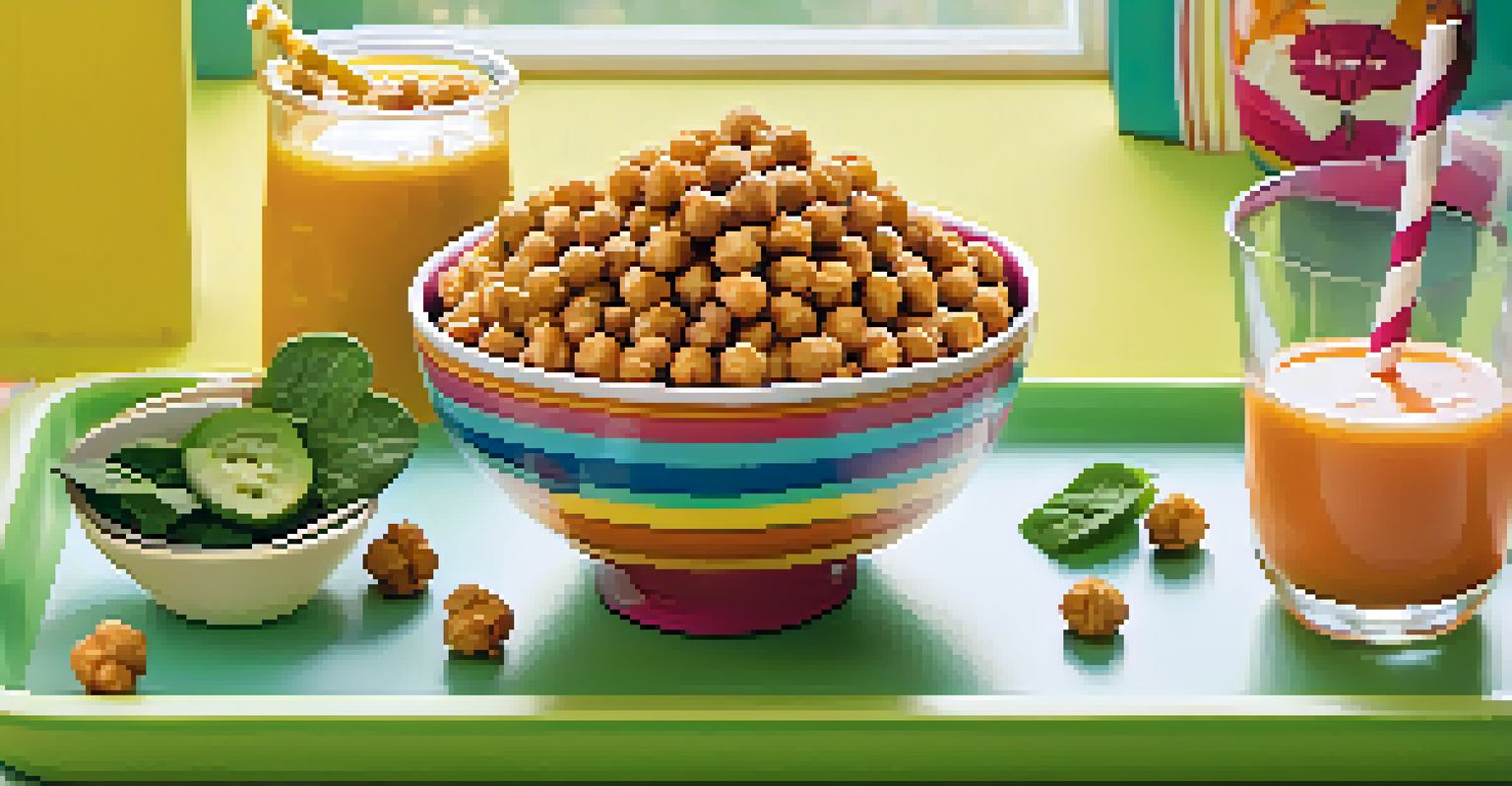How to Ensure Your Child Gets Enough Protein on Vegan Diet

Understanding Protein's Role in Your Child's Diet
Protein is a crucial building block for your child's growth and development. It supports muscle growth, repair, and overall body function. For vegan families, understanding how to incorporate sufficient protein is essential to ensure your child thrives.
Let food be thy medicine and medicine be thy food.
Unlike animal products, plant-based sources of protein often lack some essential amino acids. However, this doesn't mean your child can't get enough protein on a vegan diet. By diversifying their food choices, you can easily meet their nutritional needs.
It's important to remember that protein needs vary by age, activity level, and health status. Generally, children aged 1-3 need about 13 grams of protein per day, while those aged 4-8 require around 19 grams. Keeping these numbers in mind will help you plan better.
Key Plant-Based Protein Sources for Kids
There are plenty of plant-based foods rich in protein that you can include in your child's diet. Foods like lentils, chickpeas, quinoa, and tofu are excellent sources. Incorporating these into meals can help ensure your child gets the necessary protein without feeling deprived.

Nuts and seeds, such as almonds, chia seeds, and hemp seeds, are also packed with protein. They can be added to smoothies, oatmeal, or yogurt for a protein boost. However, be cautious with whole nuts for younger children due to choking hazards.
Protein is vital for growth
Protein is a crucial component in your child's diet, supporting their growth, muscle repair, and overall health.
Another great source of protein is plant-based dairy alternatives, like fortified almond or soy milk. These options often come enriched with additional protein and nutrients, making them a smart choice for growing kids.
Creating Balanced Meals with Protein
When preparing meals, aim for a balance of protein, carbohydrates, and healthy fats. A well-rounded plate could include brown rice topped with black beans, avocado, and a side of steamed broccoli. This combination not only provides protein but also essential vitamins and minerals.
You are what you eat, so don’t be fast, cheap, easy, or fake.
Don't forget about snacks! You can offer hummus with veggie sticks, nut butter on whole grain bread, or energy balls made from oats and seeds. These snacks can be both fun and nutritious, keeping your child energized throughout the day.
Incorporating a variety of colors and textures in meals can also make eating more enjoyable for children. The more appealing a meal looks, the more likely they are to eat it, so get creative with your presentations!
Understanding Amino Acids and Protein Completeness
Proteins are made up of smaller units called amino acids. There are 20 different amino acids, and nine of them are essential, meaning they must come from food. While most plant proteins are considered 'incomplete' because they lack one or more essential amino acids, combining different sources can provide all the essentials.
For instance, pairing rice with beans creates a complete protein, as they complement each other's amino acid profiles. Similarly, whole grain bread with peanut butter is not just delicious but also a smart protein pairing.
Plant-based proteins can meet needs
Diverse plant-based foods like lentils, quinoa, and nuts can provide sufficient protein for vegan children.
Encouraging your child to consume a variety of protein sources throughout the day will help them meet their amino acid needs. A diverse diet is key to ensuring they receive all the nutrients necessary for healthy growth.
Incorporating Protein-Rich Snacks for Kids
Snacks can be a wonderful opportunity to sneak in more protein into your child's diet. Consider options like roasted chickpeas, edamame, or a smoothie made with spinach and protein powder. These tasty snacks keep energy levels high and hunger at bay.
Trail mix featuring nuts, seeds, and dried fruits is another great option. Not only is it easy to prepare, but it also provides a satisfying crunch that kids love. Just be sure to monitor portion sizes if your child is young, as nuts can be calorie-dense.
Protein bars specifically designed for kids can also be handy. Look for those that are low in sugar and made with whole food ingredients for a nutritious snack on the go.
Monitoring Protein Intake and Adjusting as Necessary
It's essential to keep an eye on your child’s protein intake, especially if they are newly vegan. Tracking their meals can help ensure they are getting enough protein throughout the day. Use apps or food diaries to record what they eat, making it easier to spot any gaps in their diet.
If you notice your child seems low on protein, consider adjusting portion sizes of protein-rich foods or introducing new sources. You might even find that they enjoy foods they haven't tried yet, helping to diversify their diet.
Balance meals for better nutrition
Creating balanced meals with protein, carbohydrates, and healthy fats ensures your child receives essential nutrients.
Consulting with a pediatric nutritionist can also be beneficial. They can provide personalized advice and ensure your child’s dietary needs are met, giving you peace of mind.
Educating Your Child About Vegan Nutrition
Teaching your child about nutrition can empower them to make healthier choices. Discuss the importance of protein and where they can find it in their meals. Making them aware of their dietary needs can foster a sense of responsibility for their own health.
Consider involving them in meal planning and preparation. Allowing them to help choose recipes or cook can spark their interest in plant-based foods and make them more eager to try new things.

You might even explore cooking classes or workshops that focus on vegan meals. This can be a fun way for them to learn more about food while developing valuable skills in the kitchen.